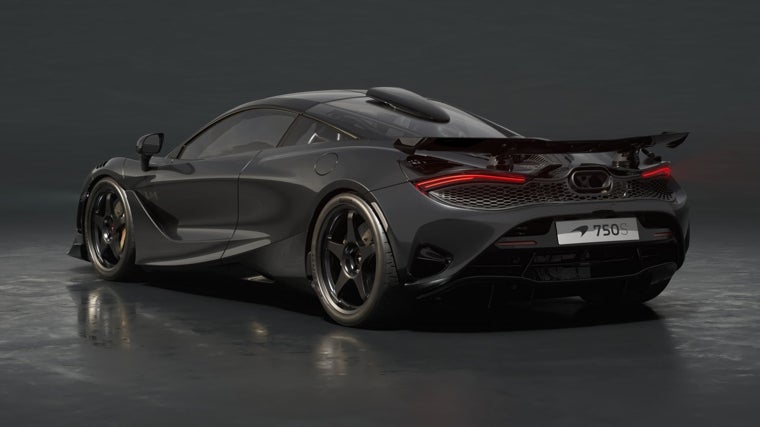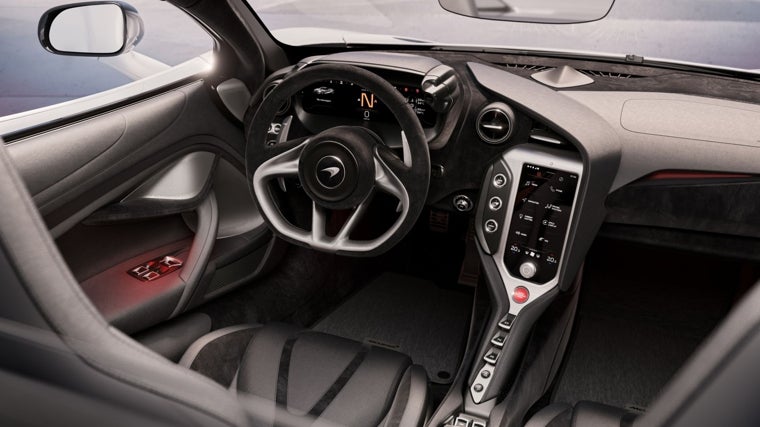McLaren 750S: simple, well done, taken to the extreme

Shortly before the Jamuz area went up in flames, a friend and I went to treat ourselves to the legendary León steakhouse, Bodega el Capricho. The place is fantastic: decorated with simplicity and sobriety in a place where you have to make a conscious effort to reach the restaurant.
There, they specialize in one thing: grilled meat. Its owner, José Gordón, has taken what was once a humble steakhouse to the highest levels of international acclaim—his restaurant is ranked number 6, and first in Spain, in The World's Best Steak Restaurants—and he's achieved this through attention to every aspect that borders on obsession.
Although there are other establishments in our country where the bill can be considerably more expensive, eating there isn't cheap. And part of what you pay for is the message: years of hard work to build a reputation and a job well done come at a price.
What does this have to do with a 750-horsepower supercar? Lend me your eyes for a moment. The McLaren 750S is one of the latest models in the English manufacturer's Supercars series. It was launched in 2023 to replace its home run, the excellent 720S. And their headquarters in Woking knew they couldn't come up with just any half-baked attempt.
So they built the lightest and most powerful production McLaren to date. The engine is still based on the V8, but now delivers more power directly to the rear wheels, which, combined with its 1,277 kilos of weight, makes it handle like a scalpel on the road.
 The 750S features active aerodynamics for improved braking.
McLaren
The 750S features active aerodynamics for improved braking.
McLaren
The 750S isn't cheap. It starts at €284,000, but you can customize it much further, adding paint options and, for speed and lap time fanatics, carbon fiber trim that will reduce its weight and your bank balance.
Aesthetically, it's very similar to its predecessor, but the changes are significant. Although not visible, McLaren claims that 30% of the 750S's parts are new compared to the 720, and it retains the same core, but with improvements. Inside, it's sober and simple, with only one priority: conveying sensations to the driver—something it achieves better than competitors in a higher price range.
The steering wheel has no buttons, just carbon fiber paddle shifters with an incredibly satisfying feel. And, if you don't have one, it doesn't even have Android Auto. Apple users can connect their phone, but only via a cable, if they want to access their music through the excellent Bowers & Wilkins sound system.
 The interior of the 750S is sober and driver-oriented.
McLaren
The interior of the 750S is sober and driver-oriented.
McLaren
Who would want to play music over the sound of its legendary F1-based V8 remains to be seen, but the possibility exists. This engine is capable of reaching 100 km/h in less than 3 seconds, which seems to be becoming the industry standard for serious sports cars.
The McLaren 750S is, therefore, a supercar that sits at the top of the driving machine food chain. When driven leisurely, it achieves fuel consumption of 14 liters per 100 km/h, which is impressive considering there's a V8 behind your head constantly tempting you to accelerate. Warning: this temptation is hard to resist.
When you work obsessively for decades to marginally improve something that's already good, you achieve international recognition, commercial success, and create something memorable that goes beyond the tangible. And that comes at a price.
ABC.es





